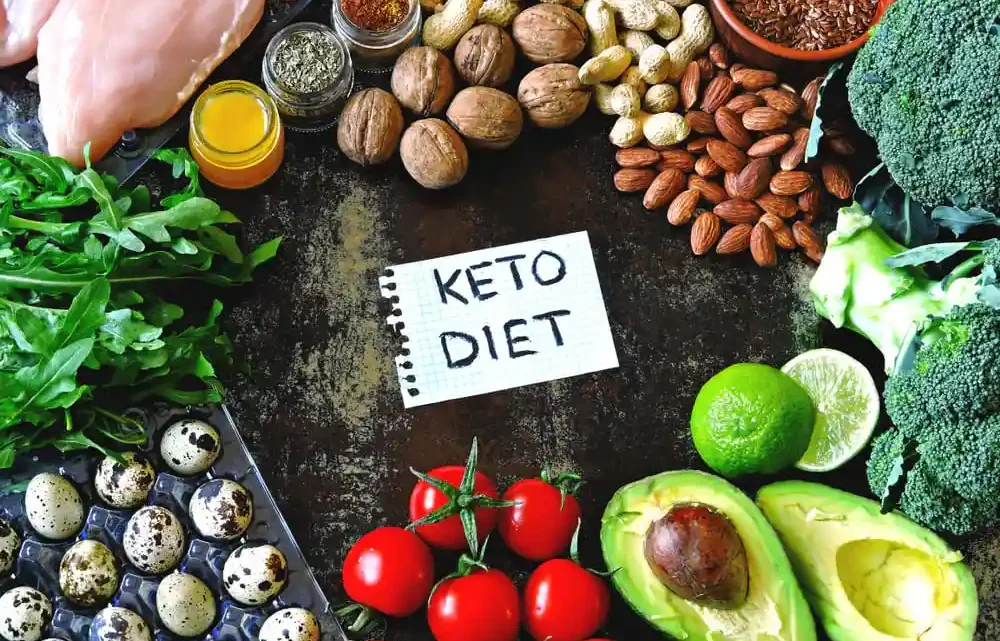
Keto Diet vs Paleo Diet: Differences, Pros, Cons, and Meal Ideas
In the world of healthy eating and sustainable weight loss, few approaches spark as much debate as the keto diet and the paleo diet.
Both have surged in popularity for their promise of rapid weight loss, improved energy levels, and better overall wellness, but they couldn’t be more different in philosophy and execution.
Trending Now!!:
If you’re wondering about the differences between keto and paleo, or debating which low-carb diet suits your lifestyle, this guide breaks it down with the pros and cons of the keto diet and paleo diet, plus practical keto meal ideas and paleo meal ideas to get you started.
Whether you’re a beginner exploring a high-fat diet like keto or preferring the whole-foods focus of paleo, understanding these nuances can help you make an informed choice for long-term success.
What Is the Keto Diet?
The keto diet, short for ketogenic, is a high-fat, low-carb diet designed to shift your body’s fuel source from carbohydrates to fats, a metabolic state known as ketosis.
Typically, it breaks down to about 70-80% of calories from fats, 15-20% from protein, and just 5-10% from carbs—often under 50 grams per day.
This approach was originally developed to treat epilepsy but has gained traction for weight loss and managing conditions like type 2 diabetes. Foods like avocados, fatty fish, eggs, and full-fat dairy take center stage, while grains, sugars, and most fruits are off-limits to maintain ketosis.
What Is the Paleo Diet?
Inspired by the eating habits of our Paleolithic ancestors, the paleo diet emphasizes whole foods that could have been hunted or gathered—think lean meats, fish, fruits, vegetables, nuts, and seeds.
It eliminates processed foods, grains, legumes, and most dairy, promoting a return to unrefined, nutrient-dense options for optimal health.
Unlike strict macronutrient tracking, paleo is more about food quality than quantity, allowing natural carbs from fruits and veggies while encouraging an active lifestyle with elements like yoga or outdoor activities.
Key Differences Between Keto and Paleo
While both diets ditch processed junk and prioritize real ingredients, their foundations diverge significantly. Here’s a quick comparison:
| Aspect | Keto Diet | Paleo Diet |
|---|---|---|
| Primary Focus | Inducing ketosis via low carbs (under 50g/day) and high fats | Mimicking ancestral eating with whole, unprocessed foods |
| Carb Intake | Very low (5-10% of calories) | Moderate (from fruits/veggies, 25-35% of calories) |
| Fat Emphasis | High (70-80% of calories, including dairy and oils) | Moderate (35% of calories, from natural sources like nuts) |
| Allowed Foods | Dairy (cheese, butter), low-carb veggies, nuts, berries | Fruits (apples, berries), lean meats, no dairy or grains |
| Sustainability | Short-term for quick results; strict tracking required | Long-term lifestyle; more flexible socially |
| Best For | Rapid weight loss and blood sugar control | Overall wellness and anti-inflammatory benefits |
These differences between keto and paleo mean keto excels at fat-burning efficiency, while paleo fosters a broader sense of healthy eating without the carb-counting hassle.
Pros and Cons of the Keto Diet
The keto diet has become a go-to for those seeking dramatic transformations, but it’s not without trade-offs.
Pros of the Keto Diet
- Rapid Weight Loss: By slashing carbs, it curbs appetite and taps into fat stores for energy, often leading to 5-10 pounds lost in the first week.
- Blood Sugar Stability: Ideal for diabetes management, as it improves insulin sensitivity and reduces spikes.
- Mental Clarity: Many report enhanced focus once adapted, thanks to steady ketone-fueled brain energy.
- Therapeutic Benefits: Proven to reduce seizures in epilepsy and may aid neurological conditions like Parkinson’s.
Cons of the Keto Diet
- Nutrient Gaps: Limiting fruits and grains can shortchange vitamins like C and B, plus minerals such as magnesium.
- Keto Flu: Initial side effects include fatigue, headaches, and irritability as your body adjusts.
- Hard to Sustain: The rigid rules make dining out or social events tricky, potentially leading to yo-yo dieting.
- Organ Strain: High fat intake may burden kidneys or livers, especially for those with pre-existing issues.
Pros and Cons of the Paleo Diet
The paleo diet appeals to those craving simplicity and a back-to-basics vibe, but its restrictions have downsides too.
Pros of the Paleo Diet
- Heart Health Boost: Cuts processed foods and sugars, lowering cholesterol, blood pressure, and inflammation risks.
- Sustainable Weight Loss: Promotes fullness from fiber-rich whole foods, aiding gradual, maintainable drops in BMI.
- Gut-Friendly: Emphasizes anti-inflammatory foods like veggies and omega-3-rich fish for better digestion.
- Holistic Wellness: Pairs eating with movement and stress reduction for comprehensive lifestyle gains.
Cons of the Paleo Diet
- Higher Costs: Fresh, organic meats and produce add up compared to budget staples like rice or beans.
- Potential Deficiencies: Skipping grains and dairy might limit calcium, B vitamins, and folate intake.
- Red Meat Concerns: Heavy reliance on animal proteins could raise risks for heart disease if not balanced.
- Limited Research: While promising, long-term studies are sparse, making outcomes less predictable.
Which Diet Is Better for Weight Loss?
For sheer speed, the keto diet often edges out as the best low-carb diet for weight loss, thanks to ketosis suppressing hunger and accelerating fat burn—studies show up to 10% body weight reduction in months.
However, the paleo diet shines for sustainable weight loss, fostering habits around healthy snacks and whole ingredients without the burnout of macro math.
If you’re active or prefer variety, paleo might prevent the rebound weight gain common with stricter plans. Ultimately, the “better” choice aligns with your goals: keto for quick resets, paleo for enduring vitality.
Keto Meal Ideas and Paleo Meal Ideas
Putting theory into practice is key—here are beginner-friendly keto meal ideas and paleo meal ideas to inspire your week.
Simple Keto Meal Ideas
Focus on high-fat diet staples for satiety:
- Breakfast: Avocado-egg boats with cheese and bacon bits (under 5g net carbs).
- Lunch: Grilled salmon salad with olive oil dressing, spinach, and feta.
- Dinner: Ribeye steak with broccoli sautéed in butter and a handful of macadamia nuts.
- Snack: Celery sticks dipped in almond butter or a few raspberries with heavy cream.
These keep you in ketosis while delivering flavorful, easy-prep options.
Easy Paleo Meal Ideas
Embrace whole foods diet principles with nutrient-packed plates:
- Breakfast: Scrambled eggs with spinach, tomatoes, and fresh berries.
- Lunch: Turkey lettuce wraps with avocado, cucumber, and apple slices.
- Dinner: Baked chicken thighs with roasted sweet potatoes (in moderation) and kale salad.
- Snack: A pear with a small portion of walnuts or carrot sticks with guacamole.
Paleo’s flexibility shines here, allowing seasonal fruits for natural sweetness.
Final Thoughts
Deciding between the keto diet and paleo diet boils down to your priorities—quick weight loss and metabolic hacks with keto, or a nourishing, ancestral-inspired path with paleo.
Both offer paths to better health, but blending elements (like dairy-free keto with paleo veggies) can create a hybrid that’s truly yours. Consult a doctor before diving in, especially with health conditions, and remember: the most effective diet is one you can stick to.
Ready to experiment? Start with a week’s worth of these keto recipes or paleo recipes and track how you feel. Your body will thank you.


